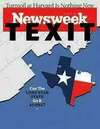Risk of secession in the USA: what's at stake for French wines and spirits?
The US market is under particular scrutiny by French wine and spirits professionals, who are hoping to see a rebound in sales by the end of 2024 or well into 2025.
However, the presidential elections scheduled for November 5, 2024 see two diametrically opposed camps clash against a backdrop of political, economic and social tensions. Recent clashes between the Texas National Guards and the Federal Border Guards over sovereignty of the Texas-Mexico border have also raised the spectre of secession.
To ignore this possibility is tantamount to ignoring historical events, as this has already happened in the past. It may even be a question of resilience for companies marketing products in this area.
Is the domestic political context in the US so problematic today as to be reminiscent of the old American Civil War? How were French wines and spirits affected by the American Civil War between 1861 and 1865?
Fall of the Soviet Union & American context: similarities?
In his 1976 book La Chute Finale (The Final Fall), Emmanuel Todd predicts the "decomposition of the Soviet sphere" thanks to his original approach as a historical anthropologist. He bases his prediction on infant mortality figures, the population's suicide rate, drug addiction, the discontent of the productive working classes and poor foreign trade figures, which in turn led to a fall in productivity.
However, life expectancy is falling in the USA, and overdose-related deaths are rising sharply (with over 500,000 deaths already due to the opioid scandal).
Of course, we can't transpose figures or predict events, even if history does repeat itself. We can, however, address the strengths and weaknesses of the American market by considering all possibilities, with the aim of improving its resilience.


The war in Afghanistan, the arms race and the collapse of the production system, culminating in the Chernobyl accident in 1986, precipitated the collapse of the Eastern bloc 14 years later. Nevertheless, in the referendum of March 17, 1991, 76% of Soviet citizens voted to remain part of the Soviet Union.
They don't see the end coming, a bit like the Titanic's passengers, whose ingress of water caused by the impact with the iceberg slowly but surely passes over the bulkheads that were supposed to make her unsinkable.

The collapse of the Soviet Union came very quickly for the protagonists, with the Soviet Union disappearing less than a year later on December 26, 1991!
Even fewer American citizens want to remain in the Union with Washington, between 70% and 66% depending on the region. The figures date from 2021, and the situation has not improved since then...

On the subject of secessionists, of the 5 geographical sub-groups represented, the South supports the idea of leaving the Union at 44%, and the Pacific Coast at 39%. The other regions are between 30% and 34%. In the South, 66% of secessionists are Republicans, while in the Pacific Coast, 47% are Democrats. In the Heartland, the majority of secessionists are independents.
The disparities between these areas are not just political, they're ideological (there was even talk of civilizational differences between North and South at the dawn of the 1861-1865 Civil War).

Similarly, certain disputes between Washington and Florida over health safety, or with Texas over the sovereignty of its border with Mexico, have brought the question of secession back into the media spotlight. The question of the intensity of the break-up is crucial, as civil war is not desirable in a nation that possesses more than 5,200 nuclear weapons.
With the divide widening, what can we expect for the American market as we know it today?
The American Civil War (1861-1865): what consequences for French wines and spirits?
Before the war, the South was France's preferred partner in terms of imports, accounting for 54% of purchases in 1860, compared with 90% in 1850, mainly cotton on which the French textile industry depended. The South's declining influence during this decade can be explained by the development of the railroad, which greatly benefited the western and northern United States, increasing internal tensions. The North, on the other hand, supplied tobacco.
France ships 40% of its silks, 66% of its wines and spirits and 55% of its watches to the USA. France therefore has a monopoly on luxury goods, and the balance of trade is still in its favor.

When the American Civil War broke out (1861-1865), the impact on French trade was not only considerable, but long-lasting. This is what Claude Fohlen observed in his article 'La Guerre de Sécession et le Commerce Franco-Américain' published in 1961 in La Revue d'Histoire Moderne & Contemporaine:
1) Southern blockade: cotton no longer supplied the French textile industry, which was experiencing an unprecedented crisis, and wines and spirits could no longer enter territories controlled by the Confederacy. What's more, since the ships trading with the USA were English or American, the absence of a French fleet would seriously compromise France's commercial presence during and after the war.
2) Protectionist tariffs: in search of funds to finance the war and reconstruction, the Union voted to tax wines (+50%), spirits (+25%) and silks (+40%). As a result, cognac lost out to local eaux-de-vie, and sales fell by 75% for eaux-de-vie and 20% for wines. Unfortunately for France, protectionist tariffs were not repealed after the war...
3) Industrialization of the USA: France loses influence. Customs duties encourage local production of textiles and spirits. Above all, there was large-scale adulteration of locally-produced spirits masquerading as cognac.
4) Inertia on the part of France: despite its natural presence with the former colonies of Canada, Louisiana and Mississippi, and its decisive role in the American War of Independence, France was beaten in its traditional export markets by younger competitors, including Germany, Switzerland and England for textiles. With the English controlling maritime traffic (remember: no French ships!), they opted to trade with cheaper suppliers, flooding the war-torn USA via smuggling routes through Canada.
Conclusion
By the end of the American Civil War, France's share of wine and spirits sales had fallen to just one-third of pre-war volumes. The US market even became a secondary market for France between 1865 and 1900! By the beginning of the 20th century, sales had not even exceeded 1850 levels...
Claude Folhen concludes his article by saying: "Industrial America can do without Europe and France, but the reverse is not true".
The Civil War saw the emergence of a new empire, and it's not to be ruled out that a new secession in post-industrial America in 2024 will mark its definitive decline.
Jérôme Savoye
(Written without AI)
